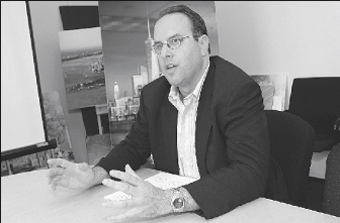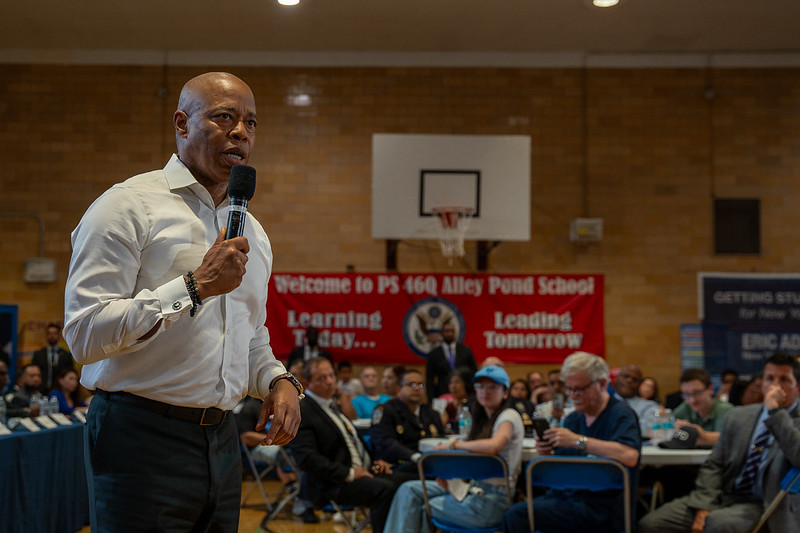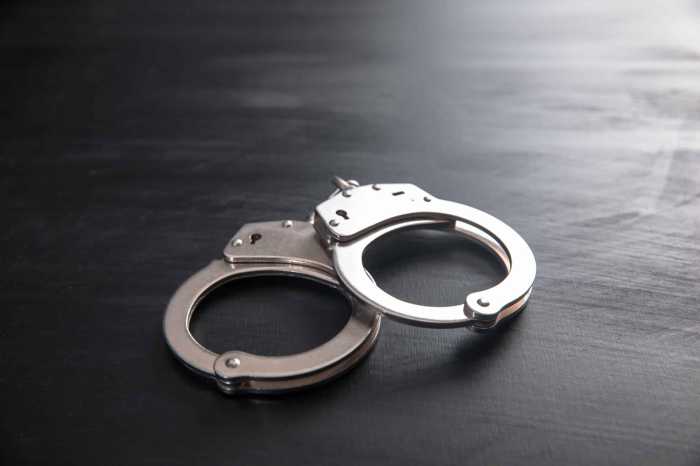By Ronda Kaysen
For a time, the Lower Manhattan Development Corp. was comprised of a telephone, a desk and Stefan Pryor. Five years later, both Pryor and the agency have come a long way.
The L.M.D.C., a city-state agency created in the wake of the World Trade Center disaster, announced this summer that its job was finished and it would soon fold. Days later, Pryor, the agency’s first employee and last president, announced he had taken a job in Mayor Cory Booker’s new administration in Newark. His last day as president of the L.M.D.C. was Sept. 11, 2006.
“It certainly has been tough at times, but we certainly have made great progress and there’s much more to come,” said Pryor, sitting in the L.M.D.C.’s 20th floor conference room on a recent Friday afternoon. “This has been a terrific experience because we’ve laid the groundwork for a Lower Manhattan that truly is better than ever.”
The conference room at One Liberty Plaza offers an unobstructed view of the World Trade Center site—a 16-acre construction pit divided by the PATH train tracks and a ramp. Last Friday, work crews and construction vehicles could be seen on the Twin Towers’ footprints where the memorial will go and on the northwest corner of the site, where the Freedom Tower will rise.
Pryor has the air of a man older than his 34 years. A graduate of Yale College and Yale Law School — where he became friends with Booker — Pryor has for all intents and purposes dedicated the past five years of his life to Lower Manhattan. Raised in Rockland County, he’s lived in the neighborhood for eight years (he hopes to sublet his Maiden Lane apartment when he heads over to Newark) and evacuated on 9/11. As his neighbors left Lower Manhattan in droves after the attacks — moving trucks lined the streets daily, he said — Pryor got more and more involved in the rebuilding effort.
“It was demoralizing. But it was also an inspiration,” he said. At the time, he worked for the Partnership for New York City, a business leadership organization, and set to work helping businesses get back on their feet.
“In a time that was very intense and very emotional, Stefan was solid as a rock and reliable,” said Eric Deutsch, president of the Alliance for Downtown New York, a business improvement district. Deutsch worked for the city’s Economic Development Corp. in 2001 and first met Pryor at a business assistance center that was set up in Brooklyn a few days after 9/11. “I was not surprised that he dedicated himself to the Lower Manhattan recovery effort and had tremendous success at the L.M.D.C.”
Pryor became president of the L.M.D.C. in May 2005 after Kevin Rampe left his post. He stepped into a significantly less powerful position than what Rampe left behind because Governor George Pataki appointed his top deputy, John Cahill, to oversee the rebuilding effort on the same day Pryor was promoted.
Nevertheless, Pryor led the agency during some of its most politically charged moments. He navigated it through a political minefield when two museums planned for a cultural center near the memorial sustained heavy criticism from some victims’ family members and media outlets. When one of the museums, the Drawing Center, bowed out of the World Trade Center’s plans, the L.M.D.C. secured $10 million to help the organization find a new home. Pataki evicted the other museum, the International Freedom Center, from the redevelopment plans.
Under Pryor’s stewardship, the L.M.D.C. helped bring down the cost of the memorial when it soared to $1 billion earlier this year. And he steered the agency when the Port Authority of New York and New Jersey, which owns the Trade Center site, struggled with Larry Silverstein, the site’s developer, over how the site would be built out. He also disseminated $35 million in cultural grants. And the agency still has almost $200 million in funds left to dole out.
“Stefan was as effective as was possible at the time,” said L.M.D.C. board member Madelyn Wils in a telephone interview. “As things became more difficult with the memorial and the Freedom Tower, he got a lot of input from the governor and the mayor and was able to balance a lot of competing interests.”
Pryor came to the L.M.D.C. on loan from the Partnership for New York City. At the time, the fledgling agency had just a chairperson — John Whitehead — and no staff, budget or board. “Stefan was somebody who was so knowledgeable about Lower Manhattan and was someone who I felt would work well with John Whitehead,” said Kathryn Wylde, president and C.E.O. of the partnership, in a telephone interview. “He really wanted to devote the next years of his life to the rebuilding effort.”
The federal government allocated the L.M.D.C. nearly $2.8 billion in Community Development Block Grants to rebuild Lower Manhattan. The L.M.D.C., Pryor in tow, moved to One Liberty Plaza — at first to temporary offices in Cleary Gottlieb “We were able to use their cafeteria, too. That was a big perk,” said Pryor. Eventually, they settled into their own offices on the 20th floor.
During Pryor’s tenure, the Environmental Protection Agency approved a demolition plan for the Deutsche Bank building on Liberty St., allowing the L.M.D.C. to finally begin cleaning the 9/11-contaminated building that it has wanted to demolish since it bought it in the summer of 2004. Scaffolding now scales the 40-story façade and a crane nearly reaches the top.
Nevertheless, the cleanup has been hampered by setbacks. The cost of buying, cleaning and demolishing the building has soared from $135 million to $207 million. A floor-by-floor demolition was supposed to begin in June, but the E.P.A. has still not approved details for the demolition phase, and it is not clear when that will begin. Even the cleanup phase — so far the top five floors have been cleaned of toxins from the collapsing Trade Towers — has had its share of problems. Human remains found on the rooftop delayed the process and the E.P.A. temporarily halted work when asbestos was found in areas considered asbestos-free.
Demolition might be slow under the L.M.D.C., but if the agency had not stepped in, it would have been glacial, said Pryor. “We are well ahead of where we would be if we had permitted private actors simply to play out their processes. They would have had no incentive to take the building down or do anything with it,” he said. The L.M.D.C. purchased the building in 2004 from Deutsche Bank, which was bogged down in litigation with its insurers. “The fact that it’s not physically coming down this instant isn’t a statement that work isn’t happening. There’s a lot of work happening.”
The Lower Manhattan Construction Command Center, the agency created to oversee Downtown construction, will soon assume responsibility for the Deutsche Bank demolition.
Despite the pitfalls of the rebuilding effort, most Downtown leaders characterize the L.M.D.C. as an agency that did the best it could, given the circumstances. “I think they’ve done a good job. We’ve had no scandals and their job is essentially done,” said Wylde.
Rampe, now the agency’s chairperson, will serve as acting president until the corporation disbands sometime in the next few months.
As Pryor prepares to move to Newark and take on a new city with its own set of economic and development needs, Lower Manhattan is still in his field of vision. “I am so tied to that particular address” on Maiden Lane, he said. “I’m going to take an apartment in Newark, but you may still see me around Downtown quite a bit.”
Ronda@DowntownExpress.com


































